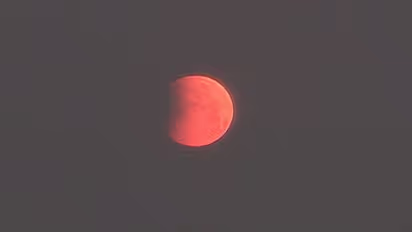Lunar Eclipse 2021: Certain Indian cities to witness rare event; Details inside

Synopsis
The eclipse will begin around 11.32 am when the Sun, Earth, and Moon align to produce a partial lunar eclipse.
The final lunar eclipse of 2021 will occur on Friday when the full Moon rises in the sky. The celestial event will be one of the longest since 1440, lasting over six hours and viewable from worldwide, including India. While sections of North and South America will see the entire duration of the eclipse, India will only see the concluding minutes of the event. The eclipse will begin around 11.32 am when the Sun, Earth, and Moon align to produce a partial lunar eclipse. The concluding phases of the partial lunar eclipse will be visible in northeast India. Parts of Arunachal Pradesh, Assam, and neighbouring states will be able to see the eclipse.
Meanwhile, the penumbral eclipse will be visible for a limited period in areas of Uttar Pradesh, Bihar, Jharkhand, West Bengal, and Odisha. At 11:32:09 a.m. IST, the Earth's partial shadow will begin to fall on the top left side of the Moon, according to Nasa. The slight darkening of the Moon will not be noticed until the Earth's natural shadow begins to fall on the upper portion of the Moon around 12:48 pm IST.
Also Read | Lunar Eclipse 2021: Date, time, where and when to watch; details inside
The Earth's complete shadow will gradually migrate off the Moon to the lower right, finally emerging from the complete shadow around 4:17 pm IST. At 5:33 pm IST, the Moon will entirely emerge from the Earth's partial shadow. The partial lunar eclipse on November 19 will break the record for the longest eclipse, becoming more extended than a total lunar eclipse. This celestial event will last 41 hours since it occurs 41 hours after the Moon reaches apogee, its furthest point from Earth.
The partial moon eclipse will not be seen from every location on the planet. These folks can, however, use the Internet to view the live feed of the event.
Here's the link: https://solarsystem.nasa.gov/resources/2655/whats-up-november-2021/